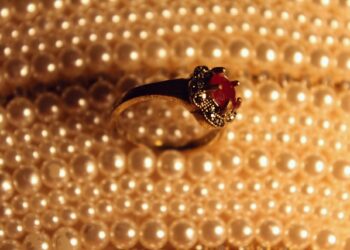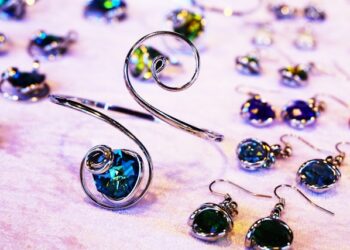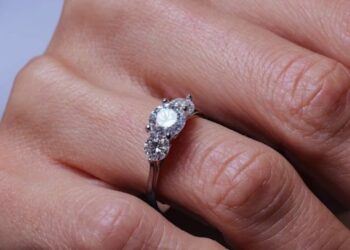Gold has long been treasured for its beauty and value, making it a highly sought-after material in the jewellery industry. With the rise of counterfeit products flooding the market, the authenticity of your gold jewellery can be called into question. Consumers must be able to identify genuine gold in their jewellery pieces to ensure they are investing in quality and value. Explore the various methods and techniques used to determine the authenticity of gold in your jewellery, helping you make informed decisions when purchasing or evaluating your precious pieces.
Understanding Gold Markings and What They Mean
One of the most important aspects of identifying authentic gold in your jewellery is understanding the markings or stamps often found on gold pieces, often seen in designer gold earrings. These markings provide valuable information about the purity of the gold and can help you determine whether the piece is genuine. The most common gold markings include karat stamps, which indicate the purity of the gold in the piece. For example, a “14K” stamp means the piece is made of 14 karat gold, while a “24K” stamp signifies pure, 24 karat gold.
In addition to karat stamps, gold jewellery may feature a maker’s mark or a hallmark, providing further clues about the piece’s authenticity. Maker’s marks are unique symbols or initials that identify the manufacturer or designer of the piece. At the same time, hallmarks indicate the quality of the gold and may also provide information about the country or region where the piece was made. By carefully examining these markings and understanding what they mean, you can make more informed decisions when purchasing or evaluating gold jewellery, ensuring that you invest in genuine, high-quality pieces.
The Magnet Test Explained
The magnet test is one simple and effective method for identifying genuine gold in your jewellery. This test involves using a small magnet to determine if your earrings are made of real gold or are simply coated in a thin layer of precious metal. Since gold is not magnetic, a real gold earring should not be attracted or repelled by the magnet. If the magnet attracts the earring, it is likely made of a different metal or alloy containing iron.
Hold the magnet close to the earring and observe its reaction to perform the magnet test. If the earring is attracted to the magnet, it is not likely made of real gold. However, it is important to note that this test could be more foolproof and should be used with other methods for determining the authenticity of gold in your jewellery. Consulting with a professional jeweller or using specialised testing equipment may provide more accurate results.
Professional Assessments for High-End Jewelry
Professional assessments for high-end jewellery, such as gold earrings, are important for various reasons. One key reason to consider a professional appraisal is to determine the authenticity and quality of the gold used in your jewellery pieces. With the prevalence of counterfeit products in the market, it can be difficult for consumers to distinguish between genuine and fake gold. A professional assessment will provide you with an accurate evaluation of the gold content in your earrings, giving you confidence in the value of your investment.
A professional assessment can also provide valuable information about the overall quality and craftsmanship of the piece. A trained appraiser will be able to evaluate the condition of the earrings and any additional gemstones or embellishments that may be present. This information can be useful when deciding to sell or insure your jewellery, as it provides a detailed record of the piece’s characteristics and value. Overall, investing in a professional assessment for your high-end jewellery, such as gold earrings, can offer peace of mind and assurance in the quality and value of your precious pieces.
The Weight Test: Gold vs. Common Counterfeits
A weight test is one of the most reliable ways to distinguish authentic gold from counterfeit metals. Gold is a dense metal, so it should feel heavier in your hand compared to other metals such as brass or copper. Using a scale to weigh your jewellery piece, you can get a rough estimate of its gold content based on weight. Remember that different karats of gold (such as 10K, 14K, or 18K) will have varying densities and weights, so it is important to know what karat your jewellery is before conducting the weight test.
In addition to the weight test, the feel of genuine gold can also help identify its authenticity. Gold is a soft metal, so it should feel malleable and easy to bend slightly under pressure. If the jewellery piece feels stiff and does not bend easily, it may be a sign that it is not made of genuine gold. When conducting the weight and feel test on your jewellery pieces, compare them to known authentic gold items to understand the differences in weight and texture better. By using these methods together, you can increase your confidence in the authenticity of your gold jewellery.







